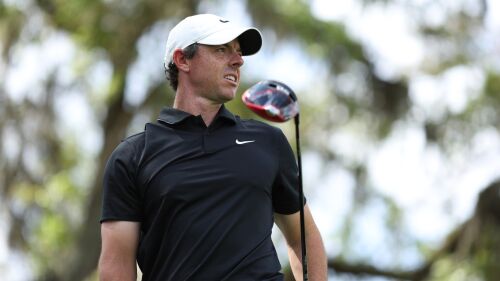PONTE VEDRA BEACH, Fla. – The grumbling has been largely hushed and away from prying eyes. There are plenty of players who don’t much care for the new designated world the PGA Tour is poised to launch next year, for all manner of reasons, but those complaints have been largely vented with inside voices.
Even after Tuesday’s players’ meeting at TPC Sawgrass, which was not mandatory and included about 50 members, many of the concerns were subdued. Even James Hahn, who on social media had been among the most outspoken opponents of the Tour’s move to designated events, declined an interview request from Golf Channel.
There are plenty of details about the new plan that players don’t like, but almost everyone agrees that the threat of LIV Golf required a dramatic response and the Tour responded dramatically. There’s also a reluctance among the rank-and-file to stand up to a move that’s clearly designed to favor the stars.
There was, however, a voice that was willing to pierce the din of discontent. It’s a voice from one who’s seen how the policy-making sausage is made in Ponte Vedra Beach, as a player director on the policy board from 2017 to ’20 and now as a member of the 16-player Player Advisory Council.
He’s seen how the game’s stars drive the economic engine of the Tour and understands that LIV Golf, the breakaway league that poached some of the circuit’s biggest names and presents what commissioner Jay Monahan called an “irrational threat” because of its nearly limitless resources from the Public Investment Fund of Saudi Arabia, demanded an answer.
He’s just not sure this is the answer.
“Initially, I wasn’t supportive [of the changes],” Kevin Streelman said following a practice round on Tuesday at The Players. “I just didn’t like seeing the separation from the middle third of our tour and schedules being set for two different degrees of finishes on the FedExCup. It seemed like a rather extreme bonus to be granted all of the exemptions when, personally, knowing the difference between player No. 49 and No. 53 is literally nothing. It’s one putt at one tournament.”
A full picture of the alterations that promise to overhaul the Tour schedule starting next year is still a few tweaks away, but the broad strokes of change will now feature a schedule with 16 designated events including the four majors, The Players, three playoff events and eight other tournaments that will include the Genesis Invitational, Arnold Palmer Invitational and Memorial.
Full-field tee times The Players Championship
Those eight designated events will have no-cut fields of 70 to 80 players plucked primarily from the top 50 on the previous season’s points list, and, this is important, will award more FedExCup points. According to various sources, there will be significantly more points awarded at the designated events (700 points to the winner) than non-designated tournaments (500 points to the winner).
It’s the point differential that cuts to the core of Streelman’s concerns that the new system will simply allow the stars to maintain the status quo while making it exponentially more difficult for players to break into the top 50.
Tour officials contend that the “churn” rate of players falling out of the top 50 each year on the FedExCup points list will remain consistent as in years past, somewhere between 40 and 60 percent.
“They firmly believe, mathematically, that the spread or the turnaround in the top 50 will be consistent with this structure as it has been in the past,” Streelman said. “We’ll see how that goes. We’ll see what the retention rate is. If it’s 85 percent [stay inside the top 50] next year then I think they’re going to have some answering to do, but if it stays at 60 [percent], then it will be a good result.”
Streelman also said he’s concerned with the “other” tournaments and how they will fit into a schedule that will be dominated by the designated stops, which will feature the top players and larger purses.
“I don’t like calling them non-designated because these are incredibly strong, historical PGA Tour events,” he said. “I don’t like giving classes to different Tour events.”
But mostly, Streelman said he’s disappointed with the process. After having served on the policy board and the PAC, these changes, which were born from a player-only meeting last year at the BMW Championship that was led by Tiger Woods and Rory McIlroy, felt forced.
Streelman, a 44-year-old father of two and one of the Tour’s most endearing personalities, paused when asked if he felt “disenfranchised” by the move to designated events:
“I wouldn’t say that’s quite the right word but it’s not far from it,” he said. “It’s been a lot of time, effort, emotions put into this and I’m finally at a point where I just need to say this is clearly the way it’s to be and I just need to focus on playing good golf. The bar has been set and it’s time to go play.”
Streelman’s initial reaction to the changes was less than supportive but, like many players who attended Tuesday’s meeting, his ideas on the subject have evolved.
“A little bit,” he admitted. “I understand the situation we’re in. I think this is a request of top players, this is the Tour’s response to our media partners and what the fans say they want to have. We’re going to see how it goes.”




